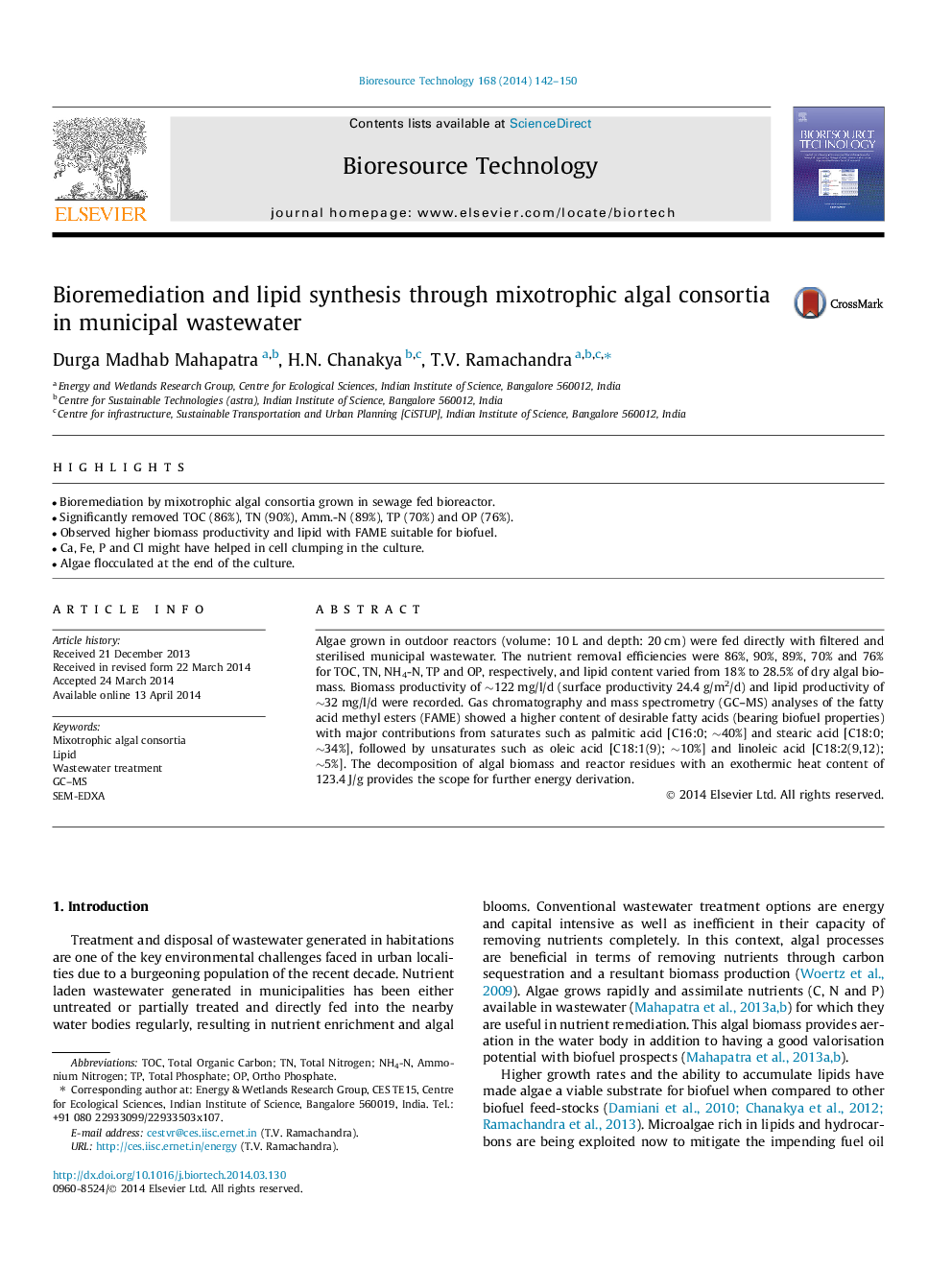| Article ID | Journal | Published Year | Pages | File Type |
|---|---|---|---|---|
| 680579 | Bioresource Technology | 2014 | 9 Pages |
•Bioremediation by mixotrophic algal consortia grown in sewage fed bioreactor.•Significantly removed TOC (86%), TN (90%), Amm.-N (89%), TP (70%) and OP (76%).•Observed higher biomass productivity and lipid with FAME suitable for biofuel.•Ca, Fe, P and Cl might have helped in cell clumping in the culture.•Algae flocculated at the end of the culture.
Algae grown in outdoor reactors (volume: 10 L and depth: 20 cm) were fed directly with filtered and sterilised municipal wastewater. The nutrient removal efficiencies were 86%, 90%, 89%, 70% and 76% for TOC, TN, NH4-N, TP and OP, respectively, and lipid content varied from 18% to 28.5% of dry algal biomass. Biomass productivity of ∼122 mg/l/d (surface productivity 24.4 g/m2/d) and lipid productivity of ∼32 mg/l/d were recorded. Gas chromatography and mass spectrometry (GC–MS) analyses of the fatty acid methyl esters (FAME) showed a higher content of desirable fatty acids (bearing biofuel properties) with major contributions from saturates such as palmitic acid [C16:0; ∼40%] and stearic acid [C18:0; ∼34%], followed by unsaturates such as oleic acid [C18:1(9); ∼10%] and linoleic acid [C18:2(9,12); ∼5%]. The decomposition of algal biomass and reactor residues with an exothermic heat content of 123.4 J/g provides the scope for further energy derivation.
